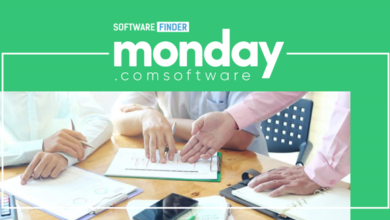8 Steps Needed to Migrate From Salesforce Classic to Lightning

Any migration of mission-critical software needs first resolve the myriad of associated complexities and then lay up a detailed plan for its eventual deployment. Because the working conditions and resources of each firm are distinct, migrating to Salesforce Lightning requires taking a specialized method that is well planned out.
Introducing such a significant change into the IT infrastructure necessitates additional work on the user adoption front. An organization needs to invest time and effort into providing its employees with the knowledge, abilities, and mentality they need to function effectively with the Salesforce Lightning capabilities and implement efficient change management plans. However, these efforts will be worthwhile in the long run because you will be able to take advantage of every new update and service as soon as they become available, in addition to experiencing a rise in your level of productivity.
The Procedures Involved in Lightning Migration
In this article, we will take you step-by-step through the necessary procedures so that you can successfully migrate from Salesforce Classic to Lightning. In case you want to outsource this migration to a professional Salesforce Consulting Agency, you can depend on “SixConsultingCorp”, and they will help you design and build Salesforce solutions to work in your world.
Buy-In for the Migration from Salesforce Classic to Lightning
Get buy-in first, not just from management but also from regular users of the system. Start there. It is important that you focus on simultaneously persuading both parties, as this will allow you to adjust the benefit analysis to the audience as well as the different departments. In order to establish a case for Salesforce Lightning, you can emphasize return on investment (ROI) for management and illustrate greater efficiency for users.
Check of Readiness for the Lightning Experience
When you want to migrate to Salesforce Lightning, the Readiness Check report can assist you in evaluating your organization to discover what aspects of your work will be affected. It is able to assist you in estimating the amount of effort that will be required to switch over. Additionally, it will highlight potential code flaws and identify features that are now being used but will no longer be available after the update. In addition, you will need to do a gap analysis to determine which elements of Lightning Experience do not have clear substitutes in place.
Log in to your Salesforce account, navigate the setup page, and click Lightning Experience. Next, click Evaluate if Lightning Experience is Right for You. After that, click Check Your Lightning Experience Readiness. Finally, click Evaluate. This will allow you to run the Lightning Experience Readiness Check.
Optimizer Report
You will be able to establish allocation once you have a better understanding of how this shift may impact your organization and are conscious of any potential problems. Using Salesforce Optimizer, you will be able to find places that can be improved, simplified, or eliminated. Salesforce Optimizer will calculate these areas based on your usage before the transfer. It can assist you in removing inactive workflow rules and unused custom profiles from your system. You can also do an assessment of your AppExchange apps to determine whether or not they are compatible with Lightning.
Helping Hands for Migrants
You can get some practice with utilizing the Lightning Experience with the assistance of the Lightning Migration Assistant. It will walk you through the steps involved in launching Lightning for your organization and answer any questions you may have along the way. You won’t be required to turn Lightning on for all users of the instance in order to get a preview of how it will work for your organization after it is upgraded to Lightning.
This test run will provide an excellent opportunity to check out apps and features, as well as to experiment with some adjustments that were not evaluated by the Lightning Experience Readiness Check. It can also assist you in determining the aspects for which your teams would require assistance in order to carry out the integration.
Go to Setup in Salesforce Classic, and then click Get Started in the Lightning Experience Transition Assistant tile, which is located at the very top of the menu. This will get you started with the Transition Assistant. After that, choose the Discover Phase >>> option. Assess the Benefits of Lightning Experience, as well as Your Readiness >>> Preview.
Set Return On Investment Goals
When a business decides to adopt new software or upgrade existing software, the primary goal is to see an increase in the return on investment (ROI). The situation is exactly the same when it comes to moving to Salesforce Lightning. In order to determine whether or not it will be possible to address the issues raised by customers and employees by means of this migration, you should begin by conducting an audit of the existing operational procedures in each division of the company. In order to demonstrate your success once the transition is finished, you will need to establish key performance indicators and benchmarks in advance.
This is the Rollout
Moving a small, straightforward organization over to the new interface as a cohesive unit is rather straightforward. On the other hand, you want to think about going for a phased rollout if your organization is either complicated or vast. You can determine which groups are prepared to be relocated first by consulting the Readiness report.
The practice of segmenting enables you to prepare a transfer that will take place sooner and keeps your attention focused on smaller lists of technical requirements at a time. The learning process may be kept active with the help of segments, which also makes it easier to work through any problems that arise during the process. Having a roadmap that will serve as a guide can make this type of phased approach to the distribution of a Lightning Experience simpler and more manageable. Include specifics regarding the order in which you intend to relocate groups, as well as a go-live date for each of the groups.
Management Strategy
After a migration procedure, it is almost inevitable to run across some level of user resistance as well as panic on some occasions. You need to specify the user profiles that will be affected, the extent of the work, and the timescales, and then you need to prepare each group in preparation for the change. Be sure to test out the essential new features of Lightning. You might want to look at going through The Lightning Experience Transition Change Management Hub, which offers detailed instructions and recommendations for the most effective ways to manage the transition of your organization.
Adoption by Users
The transition to Lightning Experience ought to be driven by an adoption team that will be responsible for end-user testing. The team can collect data and metrics to present to the rest of the team as proof, which will aid in garnering more buy-in and support for the plan. Additionally, the user adoption team, which is responsible for user acceptance, has the ability to flag important pain points for which additional training will be necessary. The comprehensive process of user adoption helps to ensure that there are no unpleasant shocks for users throughout the transition to the new interface.




